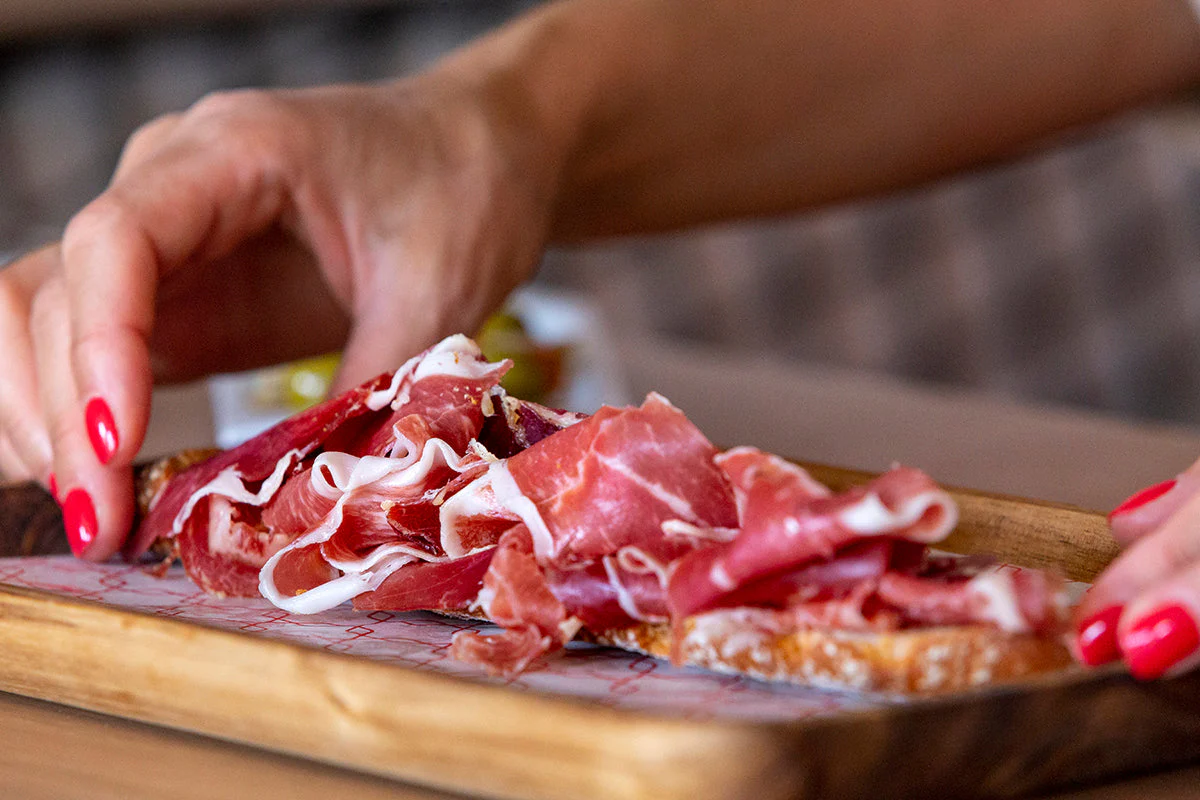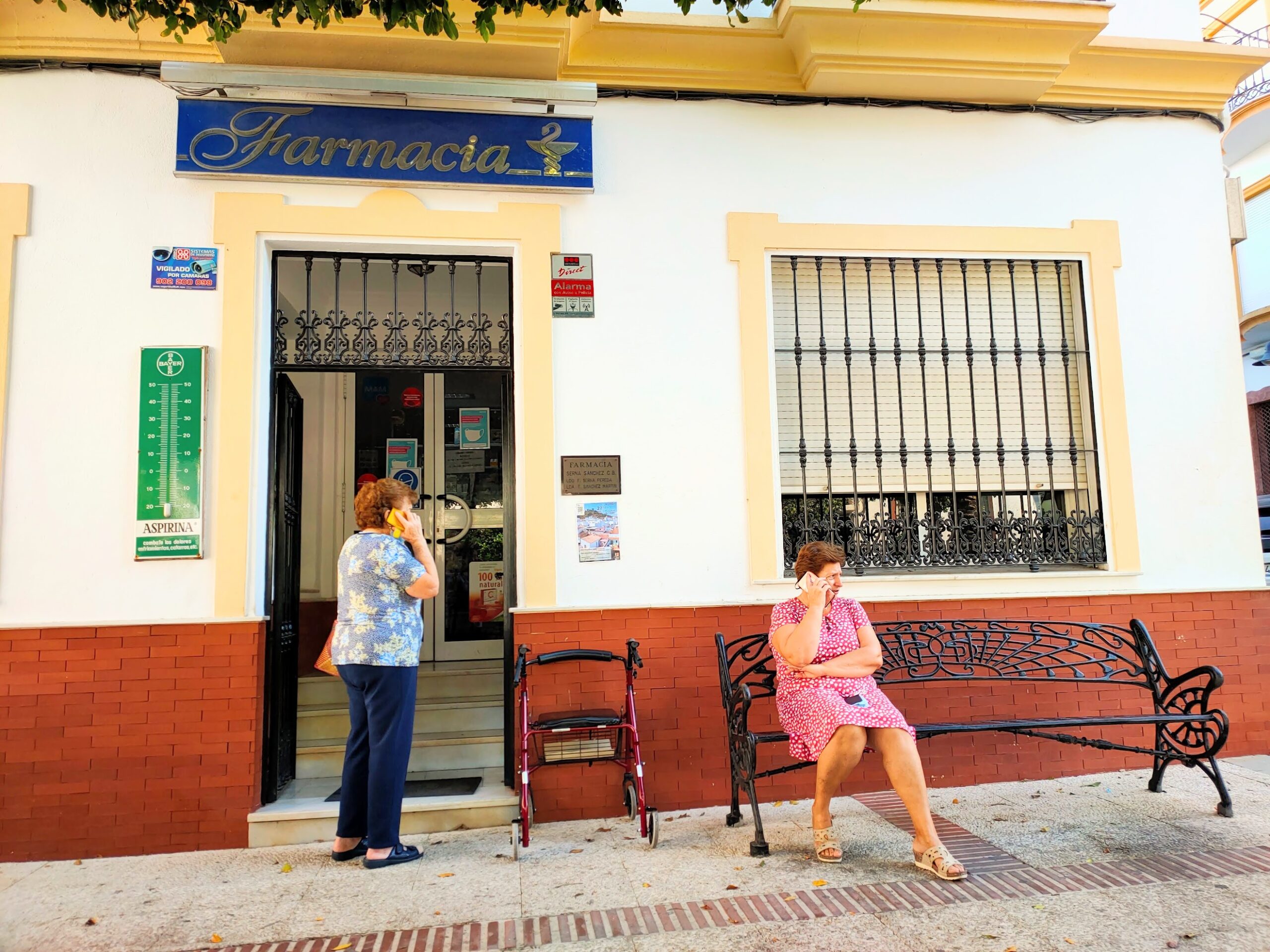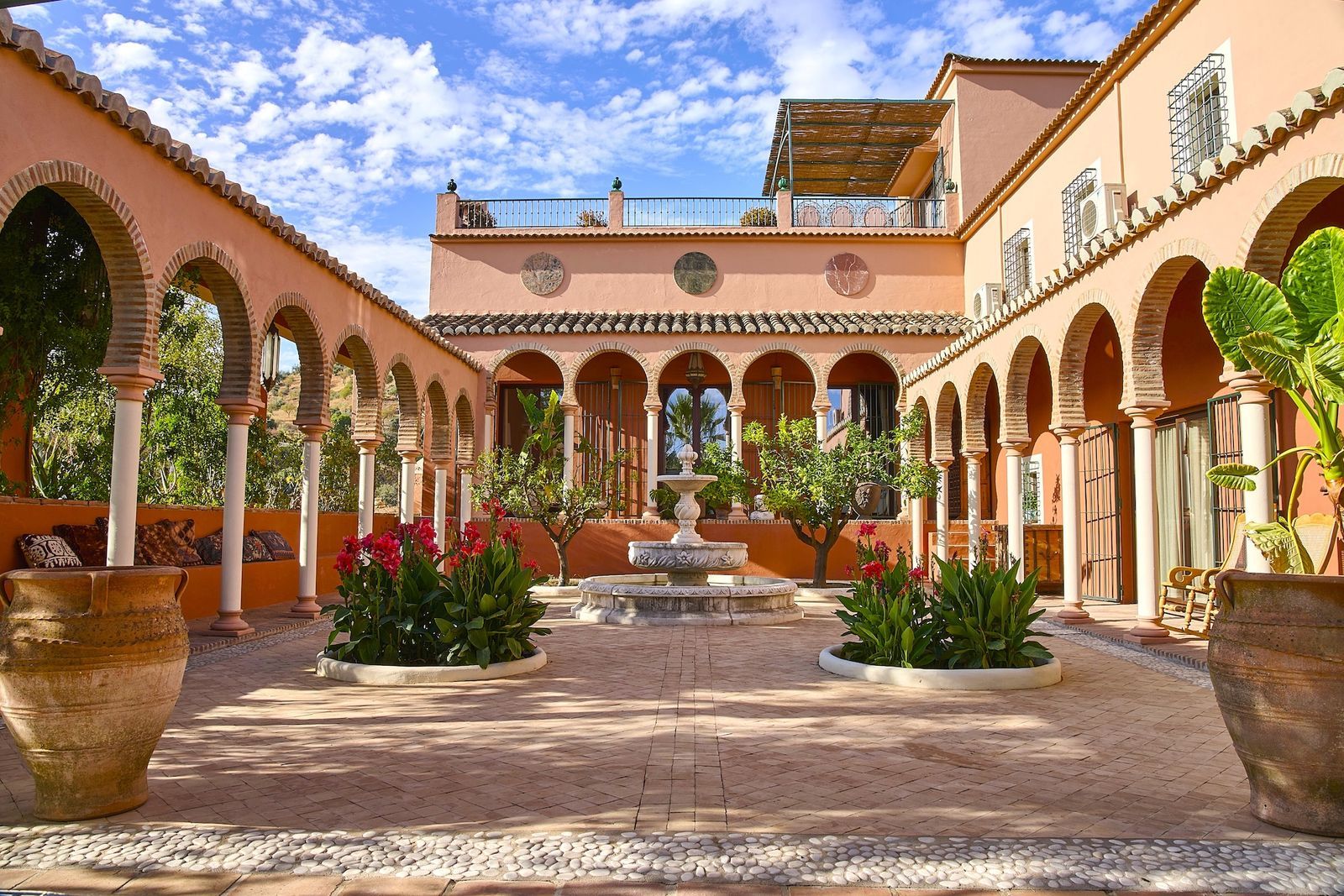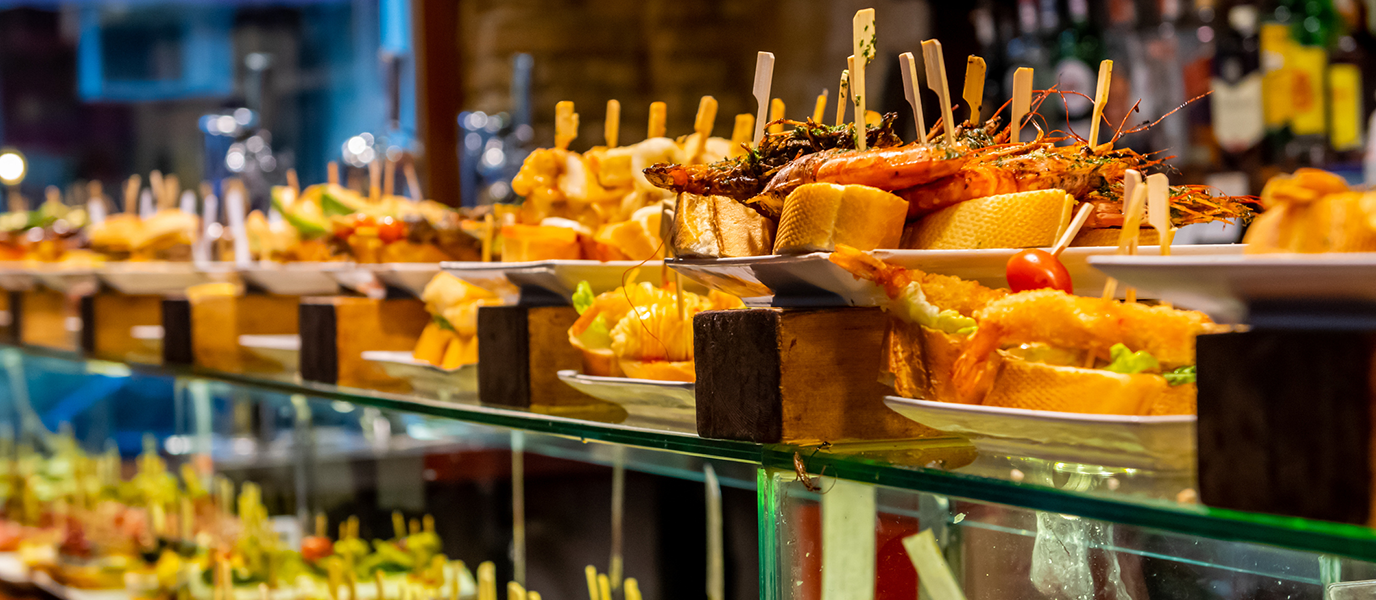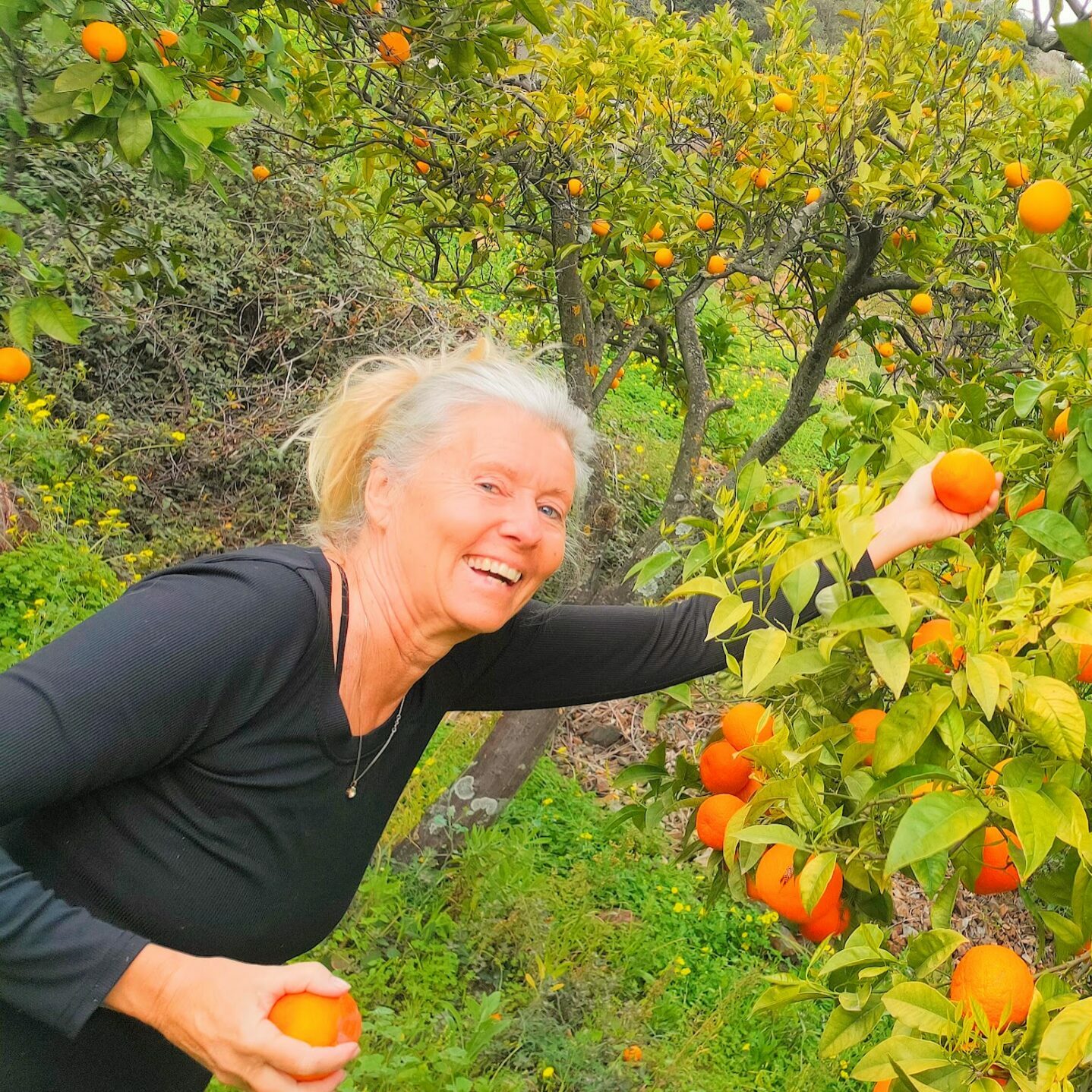Written by Charlotte Jones Sievers. October 29, 2025
The Black Gold of Spain: An Insider’s Guide to the World’s Finest Ham
Forget everything you know about cured meats. In Spain, ham isn’t just a snack; it’s a centuries-old obsession, a defining pillar of national identity, and a culinary masterpiece that demands patience and respect.
At the pinnacle of this obsession sits Jamón Ibérico de Bellota—often called “Black Gold.” It is a taste of the Spanish soul, a delicacy so rich it melts on the tongue, leaving behind an unforgettable, nutty aroma. Here’s your guide to unlocking the secrets of this Spanish treasure.
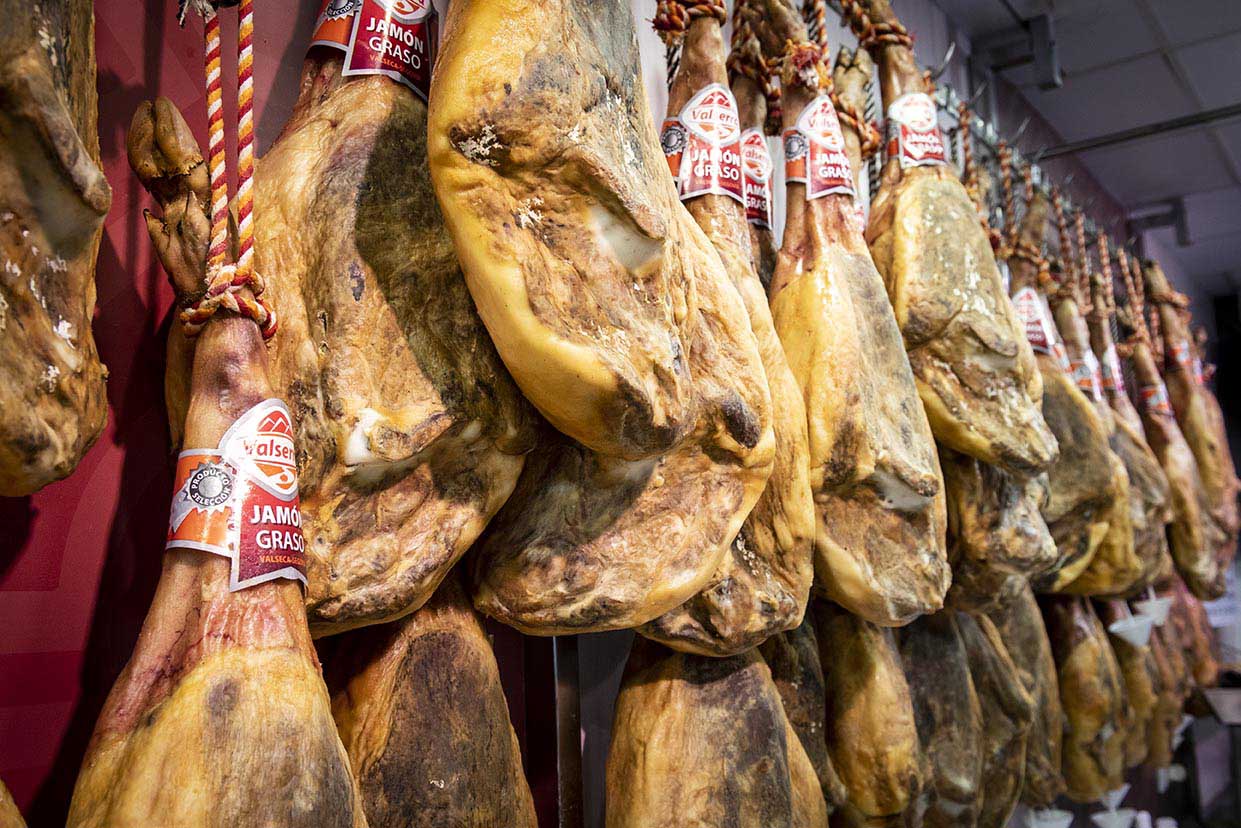
1. The Tale of Two Hams: What to Order
In Spain, you will encounter two main types of cured ham. Knowing the difference is the first step to ordering like an expert.
Jamón Serrano: The Reliable Classic
● The Pig: Comes from “white pigs” (like the common Duroc breed).
● The Diet: Fed a simple, high-quality diet of cereals and grains.
● The Taste: It’s a fantastic everyday ham—firm, savory, and relatively salty. Think of it as the reliable, high-quality Italian Prosciutto equivalent.
● The Cure: Typically cured for 9 to 18 months in the cool, dry air of mountainous regions (hence the name Serrano, or “mountain ham”).
Jamón Ibérico: The Gourmet King
● The Pig: Comes exclusively from the native Iberian Pig, a dark breed with distinctively slender legs and black hooves (Pata Negra).
● The Magic: These pigs possess a unique genetic ability to infiltrate fat into their muscle tissue, creating a dazzling, marbled texture.
● The Taste: The flavor is richer, deeper, less salty, and incredibly complex—a testament to its exceptional diet and lengthy cure.
During the final fattening phase, known as the Montanera (roughly October to March), the pigs feast on the fallen acorns (bellotas). They can eat up to 10 kilograms of acorns a day! This acorn-rich diet is the golden secret:
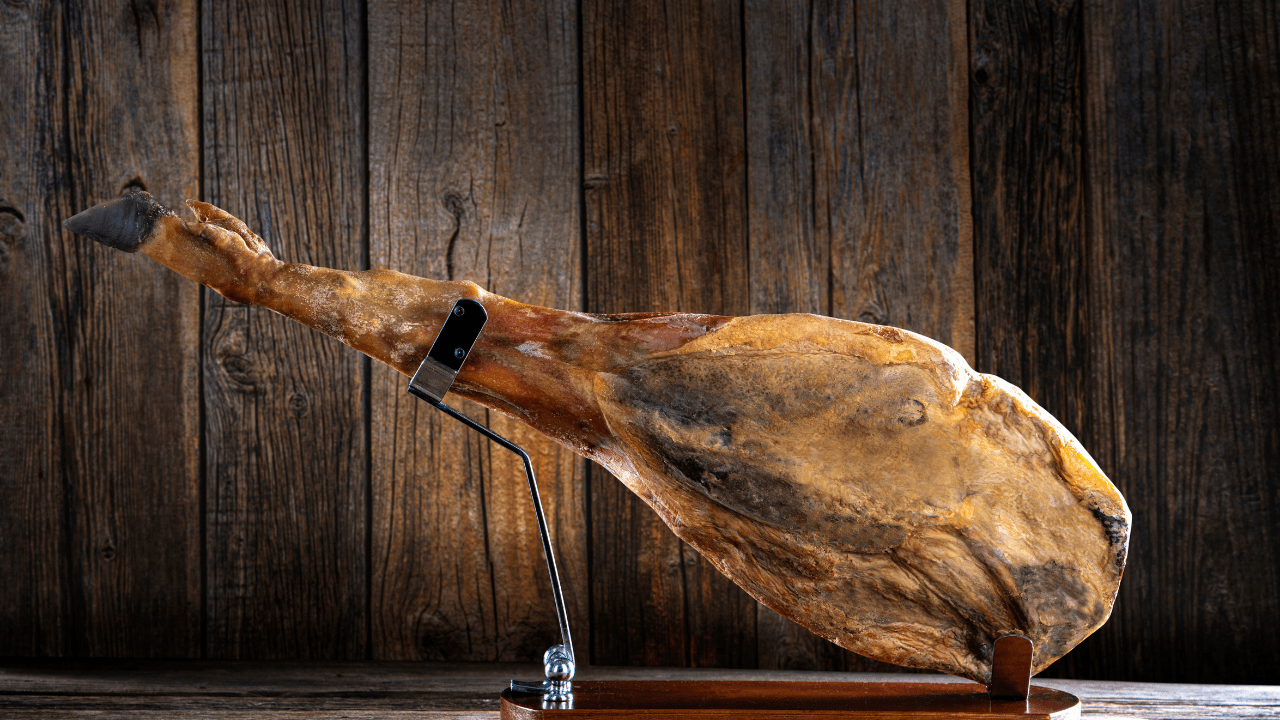
2. The Golden Secret: Life on the Dehesa
The key to the Ibérico taste lies not in the curing cellar, but in a vast, pristine landscape unique to Spain: the Dehesa. The dehesa is an open woodland of cork and holm oak trees, primarily in Southwestern Spain. Here, the best Iberian pigs are raised free-range, roaming wide open spaces.
● Oleic Acid: The acorns are packed with oleic acid—the same healthy monounsaturated fat found in olive oil. This is why the fat in a premium Ibérico ham is actually considered heart-healthy.
● Melting Point: This “good fat” gives the ham a low melting point. The slices literally begin to melt at room temperature, releasing their intense, nutty aroma and that signature buttery texture.
● Marbling: The free-range exercise and rich diet create a stunning, intricate marbling throughout the meat, resulting in that exquisite, savory finish.
3. Your Buying Guide: Deciphering the Labels
When buying a whole ham or pre-sliced packets, you need to look for the mandatory color-coded tag affixed to the ankle. This tag tells the whole story of the pig’s life:
| Label Color | Quality Tier & Name | The Guarantee |
| Black | Jamón 100% Ibérico de Bellota (Pata Negra) | The pinnacle. The pig is purebred Iberian and was fed only acorns during the Montanera. |
| Red | Jamón Ibérico de Bellota | The pig is a cross-breed (at least 50% Ibérico) but was also fed only acorns. Still sublime. |
| Green | Jamón de Cebo de Campo | The pig is free-range (fed pasture and supplementary feed). A great balance of quality and price. |
| White | Jamón de Cebo | The pig was fed cereals and grains in a farm setting. Still superior to Serrano, but the most accessible Ibérico. |
4. The Final Polish: Curing and Serving
Once the pig is processed, the transformation begins. The best hams are cured in a time-honored, slow process: first salted, then dried, and finally aged in cool, dark cellars (bodegas) for up to four years. This patience is what concentrates the flavor into the final masterpiece.
How to Enjoy Like a True Spaniard
- Temperature is Everything: Forget the fridge. Serve your Jamón at room temperature (20-25°C). This is essential for the fat to soften and “sweat,” unleashing the full complexity of the flavor.
- Thin is In: The ham should be sliced paper-thin—almost transparent. The slices should be small, single-bite pieces. This is why Spaniards traditionally use a long, specialized knife (cuchillo jamonero) and stand (jamonero).
- The Perfect Partner: A true Jamón Ibérico de Bellota needs no distraction. Enjoy it on its own. If you must pair it, a piece of crunchy bread with a light rub of fresh tomato and olive oil (Pan con Tomate) is the classic complement.
